The ability to survive in any situation boils down to the most basic and important tenet of life, food. This is as true for extreme survival situations as it is for traveling. Having an open mind when it comes to food will allow you a richer life experience, and, in extreme situations, give you the ability to make it home alive. If you are a picky eater, this needs to change, immediately. Any trip you may be planning will become a nightmare if you are not ready to add edible bugs to your menu. This is because many countries around the world not only eat bugs, but use them as a main food staple.
Insects are nutritious, easy to find, easy to grow, and are the number one protein source for billions of people. It is important to remember that countries like Thailand and Cambodia, where insects are regularly sold, do not have the same protein availability found in Western countries. There is not enough land, water, and feed to grow enough cows and chickens to satiate everyone. If you are thinking that the oceans can fill the food security gaps left by domesticated animals, forget about it.
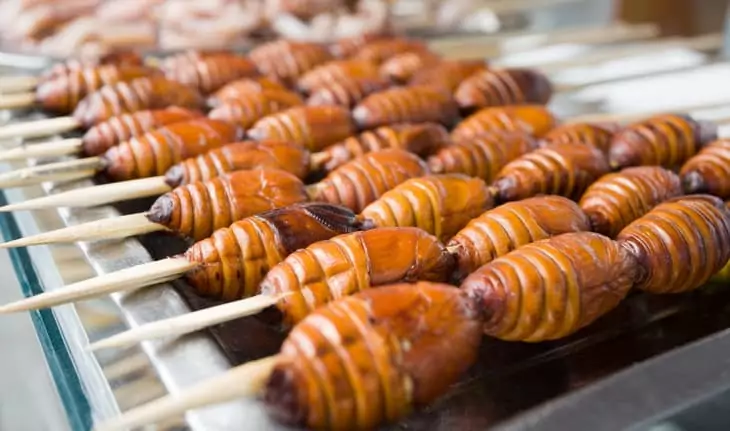
Overfishing has decimated marine life and many of the same countries that cannot grow enough animals for food have already outfished their oceans. In many regions of the globe, insects are all that is left. Please, remember this reality as you struggle to accept the necessity of eating bugs
Bugs You Can Eat
Crickets
Probably the most common insect found in food markets. They are easy to cook and highly nutritious, being a good source of protein and vitamins. Crickets can be found in all South East Asia countries, usually sold by street vendors, precooked and seasoned. Cricket flour, enjoys a small niche market in the United States and Western Europe, and if you are interested, can be ordered online. There is a famous cookie recipe, Chocolate Chirp Cookies, using cricket flour to add that special flavor.
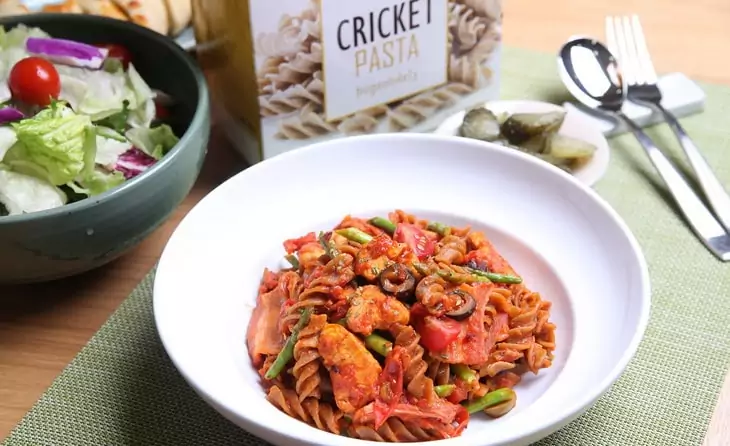
The cricket’s popularity lies in their ability to be grown indoors on the cheap. The very same crickets sold in pet stores to feed herpetologists’ obsessions can be used for human consumption.
Cricket tips!
When eating, be careful of the legs and chew thoroughly to avoid having them lodge in your throat.
Where to harvest Crickets
Crickets reach maturity by mid summer and can be found in tall grasses and fields. Areas where grass grows such as pasture, manicured lawns, and even berry patches, offer ample cricket habitat. Crickets are very loud and their distinctive chirping can be easily identified around dusk. Follow their calls to find large concentrations in order to have the best luck. It is best to always cook the insects as this will make them easier to digest and allow your body to process the nutrients better.
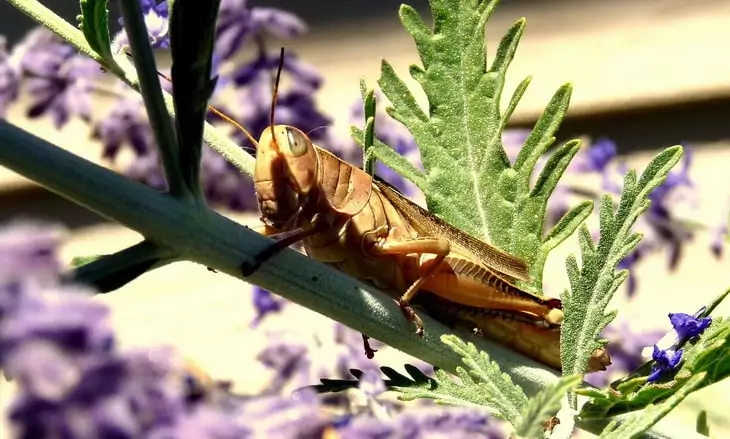
In some regions crickets are seen as pests and many people pay money to have them eradicated. Some entrepreneurs have taken advantage of this and actually get paid to collect them!
Scorpions
While not actually insects, but arachnids, these creatures are larger than most bugs and make a tasty meal. If their outwardly appearance makes you queasy, just think about crabs and how they look. If you like crab meat, the scorpion’s taste profile is very similar to their underwater crustacean cousins. It’s fun to think of scorpions and arachnids as land based crabs, maybe one day their meat will fetch just as high a price as their marine counterparts.
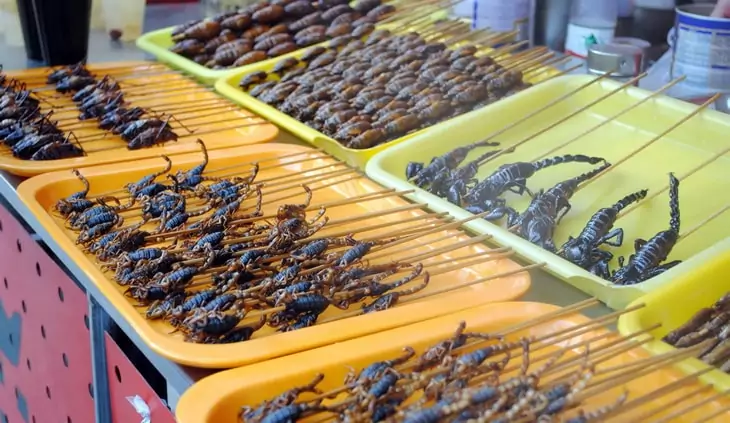
Again, in countries outside of Europe and North America, scorpions are relatively common fare. The scorpion is high in protein and makes for a larger meal than a cricket. Growing in warmer climates, such as the tropics and desert biomes, their proximity with most population centers means scorpions and humans have shared a long history together. It is no wonder why these bugs are so ubiquitous open air markets around the world.
Scorpion tips!
Do not eat the last segment of the tail, the stinger is similar to that of a bee and does contain venom. Simply cutting it off will solve this problem.
Where and when to harvest Scorpions
Scorpions are relatively common in the American Southwest. Often, they can be found inside homes and old water pipes. Many people view them as pests and pay expensive fees to try and eradicate them. If you are planning on catching some yourself, winter months are the best time of year to hunt scorpions. During the summer months scorpions burrow deep underground to escape the heat, sometimes at depths greater than 5 ft! The cooler temperatures will ensure scorpions keep closer to the desert surface in order to absorb the sun’s energy as they are cold blooded and the lower temperatures limit mobility.

Look for large rocks with small exit holes in the soil directly beneath them. These exit holes may resemble ant hills and can have loose sand or dirt in small piles near their mouths. These small piles of sand are characteristics of the scorpion’s behavior for excavating its home. Overturn the rock quickly and be ready to move fast. The scorpion will stay immobile for only so long before it realizes it is no longer safe. To catch your scorpion, have a collecting jar and maybe a long stick to carefully pack it into the container. Be careful you don’t get stung; some people have life threatening allergic reactions to the venom of some species. For more engaging topic on eating scorpions to survive, our popular piece on this topic is a must-read.
How to Catch them
Build a trap to save time and catch even more scorpions. Dig a small hole and place a cup inside so that its edge is level with the desert floor. Place jelly on the bottom and come back in the morning. Being nocturnal, scorpions are most active at night and will seek out food in the safety of darkness.
Be sure the cup used is smooth sided, either glass or plastic; you can use petroleum jelly on the rim in order to ensure nothing can climb out. Check the trap in the morning and have yourself a tasty breakfast that’s better than eggs!
Moths
A highly nutritious insect, both adults and larvae, offer a high protein snack. Moths resemble their butterfly cousins, but are nocturnal and have hairy abdomens. Finding them is as easy as overturning rocks and looking under loose bark. You will be amazed at how much food there is in the woods once insects become part of your diet.. When eating moths, I would recommend removing the wings and legs. These body parts offer very little nutrition and are not worth the struggle of choking them down.
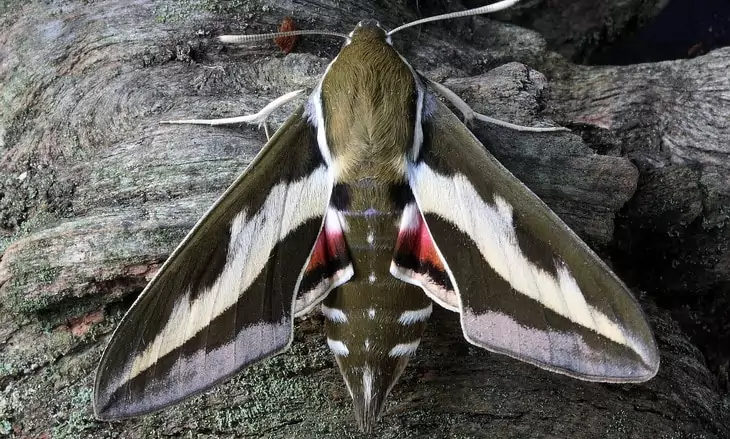
Still not convinced about moths? An MSU study found, “ In 30 days alone, the grizzly bears devour at least 300,000 calories from moths, which amounts to about one-fourth to one-third of the total number of calories they need to live for a year.” Grizzly bears can grow as large as 600lbs and must store up enough fat to hibernate during winter months. If a bear can eat moths, why can’t you?
Moth Tips!
Fry them up to mitigate that mushy bug taste!
Where to harvest Moth
Many species of moths will lay eggs underneath rocks in large rock piles and beneath loose bark. Moth larvae are the easiest to catch and resemble large caterpillars. Their immobility coupled with a soft body makes them both tasty and high in calories. Moths are nocturnal, and during the day sleep underneath loose bark and rocks. Collecting them in these spots can be very easy. After sunset, moths are attracted to the glow of artificial lights.
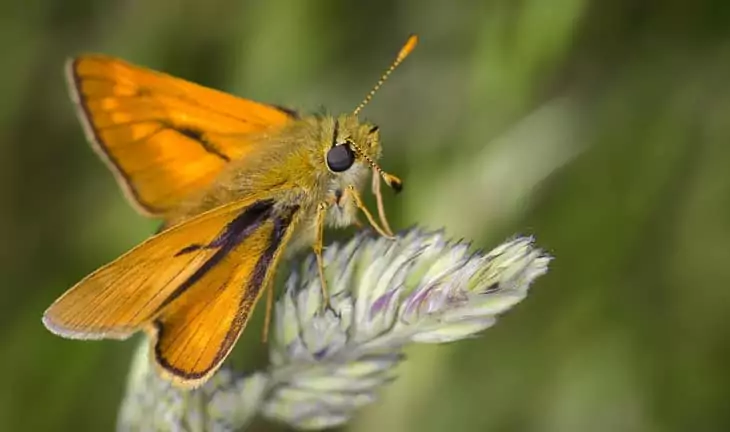
When catching them, use this to your advantage! Place a lantern in a dark patch of woods to draw moths in. You can pick the moths off the outside of the light and place them in a bag for collection. Moths are attracted to lights because they believe it to be moonlight. Try trapping moths on cloudy nights or during a New Moon to boost collection rates.
Ants
Perhaps the most pervasive species on the planet, ants can be found on every continent and in every country, minus Iceland and Antarctica. Ants thrive in both the outdoors and around human development. Living in giant colonies, these insects work together with a militant unity in order to collect food, protect the colony, and help the queen thrive. Eating them can be a wonderful experience! High in protein with a sweet flavor, ants are easy to find and provide a quick snack. The larvae are especially tender, being white in color and having no legs. Larvae are completely helpless, making them easy to harvest.
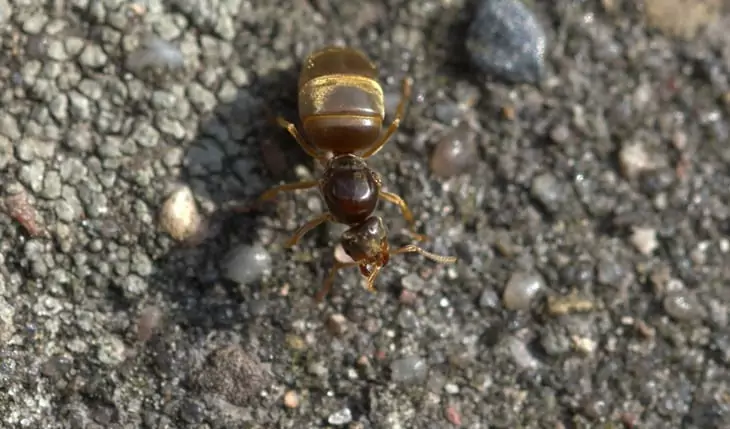
If you get really good at ant collection, see if you can get yourself the queen ant. The queen is the largest in the colony and her succulent abdomen is the utmost prize.
Ant Tips!
The best way to find ants is to spot an ant hill. This small mound of dirt is made from the tailings of ants excavating the complex tunnel system that makes their home.
Where to harvest Ants
Almost every biome in the world will be conducive to ant collection. A simple walk in a park, or even along a sidewalk will make a productive hunting trip. Once you have located an ant hill, use a long, narrow stick and gently slide it down into the anthill. The ants will swarm the foreign object in defense of their colony. Once your stick is sufficiently covered, shake the ants off into a collection container.

Continue this method until you have enough. Cook the ants individually or as a single mass, experiment with spices to find the best combination. What makes eating ants enjoyable is their exoskeletons, because it gives them a healthy crunch!
Mealworms
Of all the bugs aforementioned, mealworms are the mightiest of all. Containing over 200 calories per 100 grams, these larvae are the king of insect gastronomy. Many food markets in Asia will sell them in great quantities, their cylindrical bodies and whitish color make them easily distinguishable. Easy to find in larvae form, they can also be ground up and turned into flour, making their nutrition more palatable for western consumers.
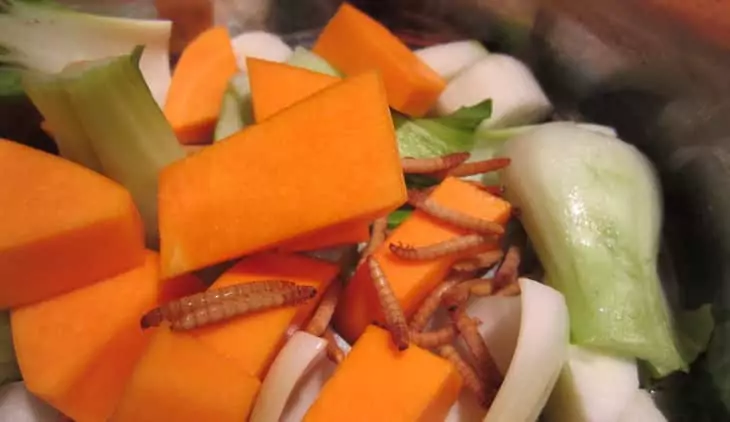
Mealworms are larvae, and when they reach sexual maturity, turn into a medium sized black beetle. These adults are edible as well, but their hard shells and thin legs, make larvae a more appetizing life stage for human consumption.
Mealworm Tips!
Throw vegetable trimmings into your mealworm colony to keep them hydrated without growing mold.
Where to harvest
Meal worms have the great distinction of being the “chicken of bugs” because of their ability to be grown indoors and at industrial scales. To do it yourself, take a 5 gallon bucket and fill about ¾ with dry oatmeal. Be careful not to use instant oats because these types of oats do no not offer as much nutrition as basic oatmeal. The easiest way to acquire mealworms is to order a couple dozen offline ( this will not set you back more than $5). Once they arrive, gently place into the oatmeal bucket and poke some small holes in the lid to create a well ventilated container.
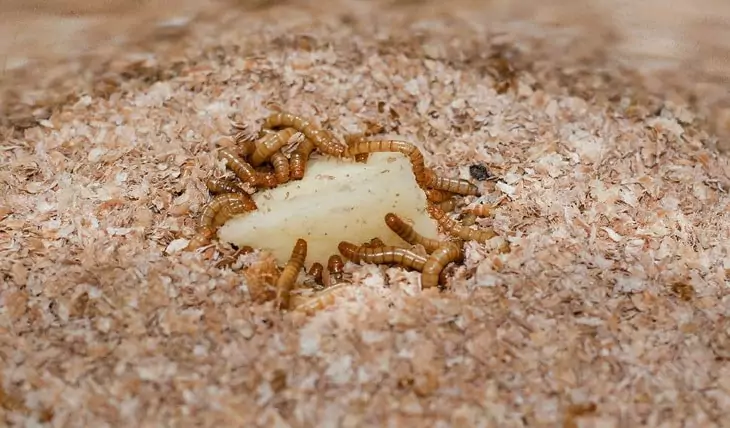
Meal worms do not need sunlight and the best course of action is to place the bucket in a cool dry area. Too wet and the oatmeal will grow mold, too dry and the mealworms will dry up. The oats function both as a food source and as natural habitat for the mealworms. Allow the first two generations to become adult beetles and seed your bucket with eggs. Mealworms take about 90 days to grow from egg to sexual maturity. Once they reach beetle form, their life span shrinks to 1-2 weeks. Be sure to throw away the dead beetles in order to prevent disease from spreading throughout your population. Once you are happy with the amount of mealworms and have a stable population, eat away!
Why you should eat bugs
At this point, you are probably thinking, I could eat bugs, but why? This may seem like a rational question, but it is not. Bugs, like any new food can seem scary, foreign, or even gross, but trust me, they are not! Just because something is new or looks different does not mean it is bad. Don’t just give in to the socially constructed food norms that you were raised in! Think about how much you may like the taste of pork, or beef, what if you find a bug that appeals to you just as much? There is a whole world out there waiting to be tasted.
To help ease your mind into accepting bugs as food, let’s look at some scenarios where you might find yourself eating some of nature’s tiny delicacies.
Traveling
Looking to experience new cultures and foods? Then eating bugs is right for you. If you are committed enough to find yourself thousands of miles from home, then you are committed enough to eat bugs. It is important to note that eating bugs is not weird, or “exotic” it is a way of life for billions of people.
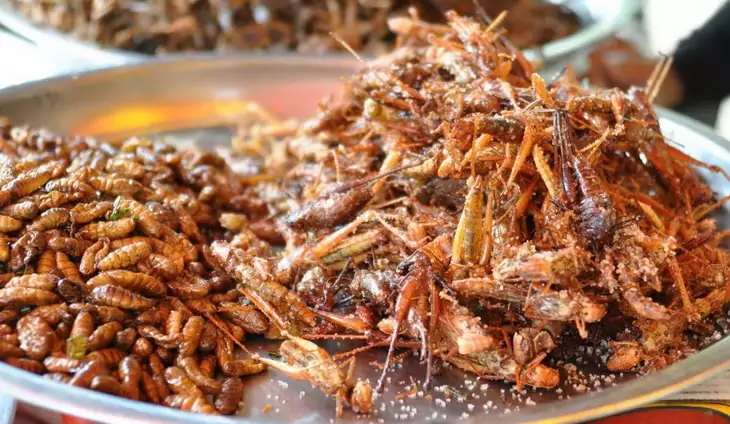
While appreciating life changing experiences on various corners of the globe, don’t forget to let your stomach in on the fun.
Sustainability
Looking for a way to reduce your carbon footprint? Ingesting insects and replacing your main source of protein with bugs will dramatically improve your environmental footprint. Insects are at the bottom of every food chain and if your caloric intake comes from this region of the food web, you are guaranteed to have less of an impact than those who eat other sources higher up. Think about this, most of the fish that you eat, the majority of their diet is made from bugs.

Time to cut out the middleman, and go insect!
Survival
Probably the most Hollywood example, but if you’re like me and find yourself recreating in remote regions, this is a likely scenario. The most likely cause of eating bugs is being lost and injured. Being injured limits your own mobility and makes hunting or gathering much harder. The decision to start eating bugs may very well be a lifesaver. Bugs are easy to find, even with a broken leg, it will not be hard to gather enough of them for a meal. If you get lost in the wilds, it’s important to know how to get to your food source. See our interesting topic on how and where to find food in the wilds for more insight.
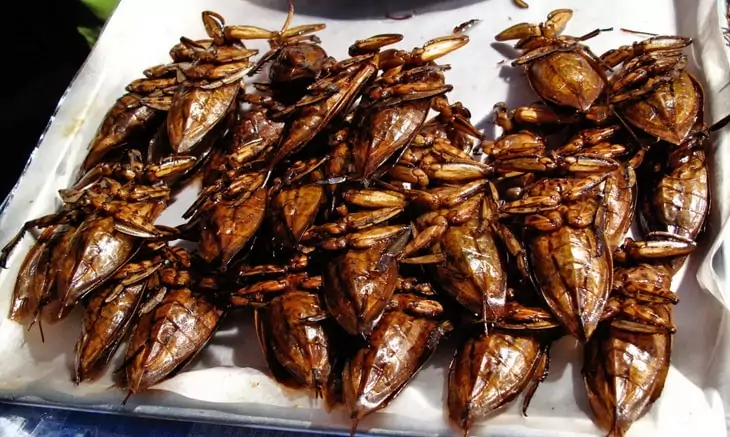
Calories are important to keep your core temperature high and spirits positive. Eating bugs in a survival situation will allow you to live long enough to be rescued!
To give you more survival tips, learn what species of snakes are edible in our must-read article, check it out.
Final Thoughts on the Topic
Think you may experience one, or all of the above scenarios? Then it’s time to stop asking why and commit to being an insectivore.
Let’s rationalize the eating of bugs. They are nutritious, high in calories and proteins, and offer the possibility for a complete meal without the environmental impact that domesticated livestock leaves. Multitudes of animals live their entire lives eating nothing but insects, why wouldn’t you eat them, everything else on Earth is!
Besides the environmental and health benefits, insects and bugs are the most common life form on earth. Taking this into account, not eating the most common food source on the planet is the most irrational decision to make. So eat up and experiment with insects!
For more tips on how to know if insects are edible or not, see our invaluable article on this topic.
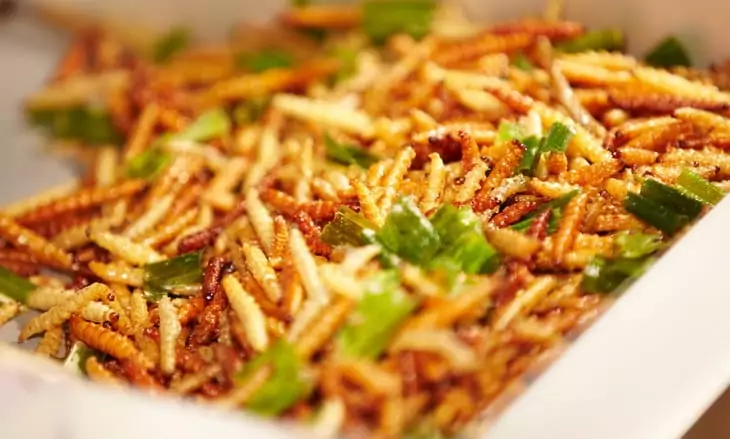
If you liked our article and found it to be informative, feel free to share it on social media so that your friends can learn something new as well. Also, if you want to share your thoughts on this topic, leave a comment in the comments section below, where you can also ask questions if you have any, and we will be more than happy to provide you an answer as soon as possible. Thank you for reading!

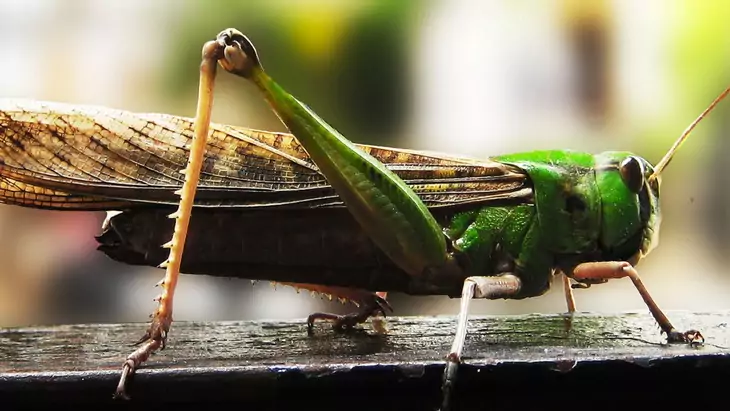

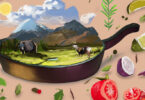



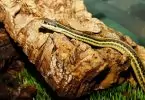
Crickets are delicious when oven toasted or pan-fried. You can always remove the legs, since they are irritating. As for scorpions, only a few species are edible.
Raw and fried termites are a popular tasty treat during survival. Personally, I recommend dried grasshopper Tacos and pan-fried crickets.